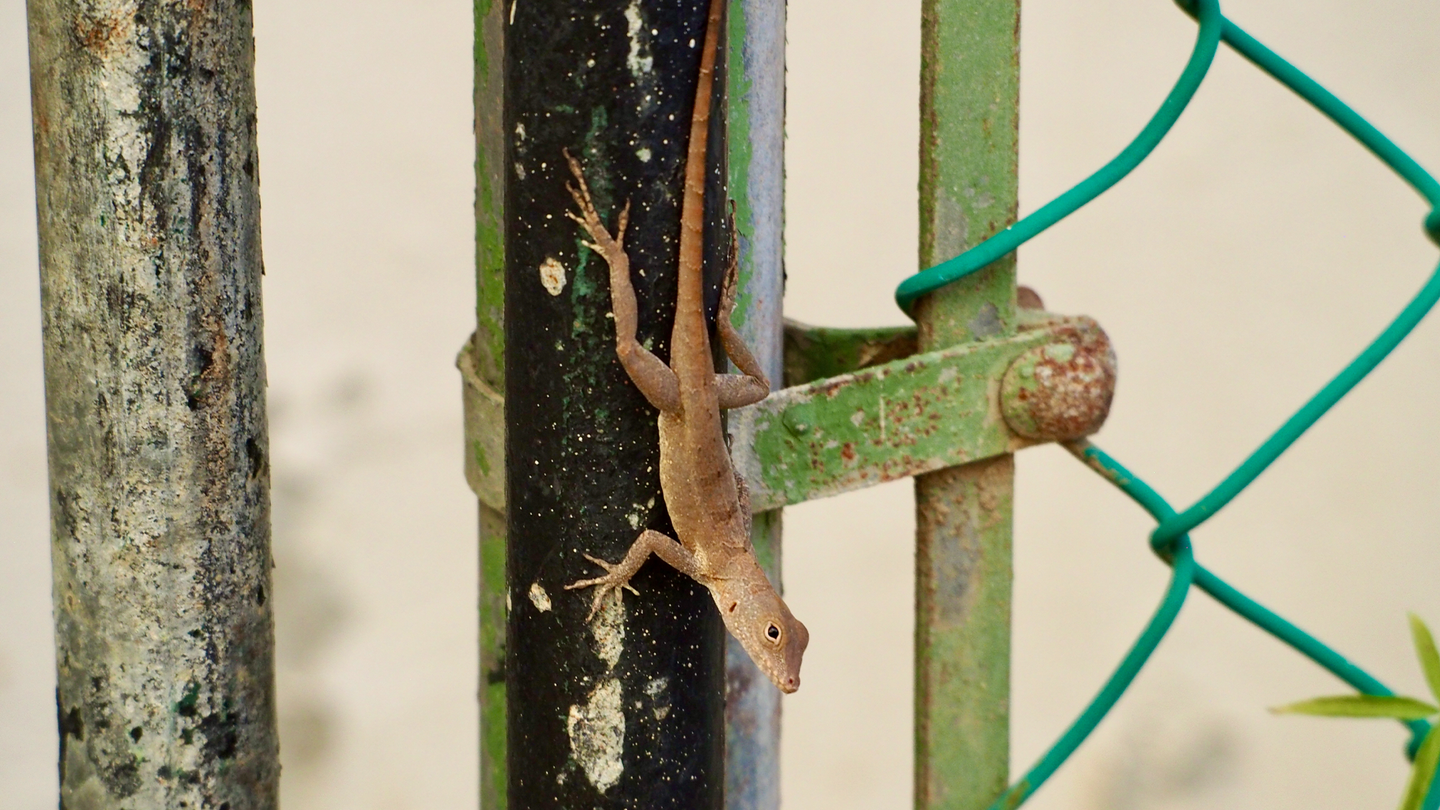
This is where i really part company with the main stream. This makes most sense understanding that the changed environment induced parental genetic choices that improved the tresponse to the environment. After all we also understand that it works at the cellular level with their own internal processors. so of course they can pick and choose what they want to express.
We have to get rid of the presumption of rigidity in our genetic thinking. This is a wonderful demo of active choice at work.
Perhaps we will all get it right some day.
When these reptiles became city lizards, it changed their genes
Longer limbs and larger toe pads appear to be linked to more city-dwelling lizards in Puerto Rico.
BY LAURA BAISAS |
PUBLISHED JAN 9, 2023
Anolis cristatellus lizards—a small-bodied species also known as the Puerto Rican crested anole—are commonly found in both urban and forested areas of Puerto Rico. Kristin Winchell
https://www.popsci.com/environment/lizard-city-genetics/?ref=refind
Urbanization has dramatically transformed landscapes all over the world, with many animals currently running out of space to live. Habitat encroachment affects everything from animal diets to social behaviors, and some organisms can even survive and thrive in urban spaces.
These species, like cougars and geese, take advantage of habitats created by humans. Researchers who study evolutionary change in urban species have even seen changes in animal metabolic rates or increase in heat tolerance.
Cities can also alter their genes. In a study published on January 9 in the Proceedings of the National Academy of Sciences (PNAS), scientists found that Anolis cristatellus lizards, a small species of lizard also called the Puerto Rican crested anole that are commonly found in Puerto Rico’s forests and urban spaces, have parallel genomic markers across different urban ecosystems on the island. This explains previous research that found physical differences between city-dwellers and neighboring forest lizards.
The variations urban Anolis cristatellus lizards have evolved include larger toe pads with more specialized scales that help them cling to smooth surfaces (walls, glass windows, etc.) and their longer limbs help them sprint across open areas.
“Urbanization impacts roughly two-thirds of the Earth and is expected to continue to intensify, so it’s important to understand how organisms might be adapting to changing environments,” said Kristin Winchell, assistant professor of biology at New York University and the study’s first author, in a statement. “In many ways, cities provide us with natural laboratories for studying adaptive change, as we can compare urban populations with their non-urban counterparts to see how they respond to similar stressors and pressures over short periods of time.”
In this new study, the team examined 96 Anolis cristatellus lizards from three separate regions (San Juan, Arecibo, and Mayagüez) and compared the urban lizards with those in the forests surrounding each city.
First, the team confirmed that the lizard populations in the three regions had genetic distinctions from one another, so that any similarities they found among lizards could be attributed to urbanization. Then, they measured their toe pads and legs. These measurements show that the urban lizards had significantly longer limbs and larger toe pads with more specialized scales on their toes, supporting their earlier study.
Genomic analysis on exomic DNA (regions of the genome that code for proteins) was then conducted, so that they could understand the genetic basis of these physical trait differences. The analysis identified a set of 33 genes in three regions of the lizard genome that were repeatedly associated with urban populations, including genes related to metabolism and immune function.
“While we need further analysis of these genes to really know what this finding means, we do have evidence that urban lizards get injured more and have more parasites, so changes to immune function and wound healing would make sense,” said Winchell. “Similarly, urban anoles eat human food, so it is possible that they could be experiencing changes to their metabolism.”
Another analysis found 93 genes important for skin and limb development in the urban lizards. This showed a gene-level explanation for why city lizards have longer legs and toe pads.
“The physical differences we see in the urban lizards appear to be mirrored at the genomic level,” said Winchell. “If urban populations are evolving with parallel physical and genomic changes, we may even be able to predict how populations will respond to urbanization just by looking at genetic markers.”
Understanding adaptations to urban environments can help scientists focus conservation efforts and build urban environments to better maintain species.
No comments:
Post a Comment